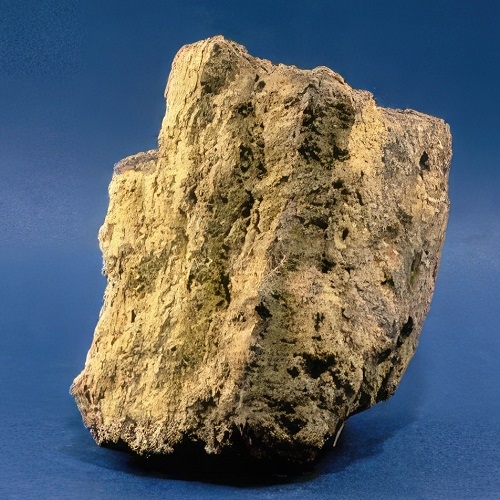Hi, Dr. Zoomie – so…I was looking on a science site online and they’re selling radioactive rocks and minerals! Some of them look really nice (although, to be fair, some are pretty ugly or boring too), but I’m wondering if it’s legal to sell (or to buy) these and if they’re safe to have around. What do you think – can I buy this sort of thing?
So – the good news is that it’s legal to sell and to buy radioactive rocks and minerals! In regulator-speak, the uranium and thorium these minerals contain is called “source material” – it’s material that can serve as source of uranium or thorium that can, in turn, be used to produce fuel for nuclear reactors or nuclear weapons. But it’s legal (https://www.nrc.gov/reading-rm/doc-collections/cfr/part040/part040-0013.html) for you to own “unimportant quantities” of source material so, as long as:
- The uranium has not been processed to enrich it
- The uranium or thorium are less than 0.05% of the mass of the rock or ore material
- Or it falls into any of a few dozen exempt categories (e.g. part of optical glass, dispersed in a nickel-thoria alloy, depleted uranium used for any of a number of purposes, and so forth)
The bottom line is that these radioactive rocks and minerals can be legally bought and sold.
As far as the “safe” part goes – you’re in luck there as well! Radioactive rocks and minerals emit alpha, beta, and gamma radiation, but not enough to hurt you.
I’ve got a bunch of radioactive rocks and minerals at home – I studied Geology and I work in radiation safety, so it’s a good way to combine my studies with my professional life. Some I use as training aids when I teach radiation safety classes, some I have out in my office and at home because they just look nice (I’m particularly proud of a beautiful sample of torbernite – a uranium phosphate mineral – that, as I sit here typing this, is about a meter away, next to my TV). https://www.usgs.gov/centers/central-energy-resources-science-center/science/uranium-mineral-systems
All of my radioactive rocks and minerals give off alpha radiation – but that’s only a risk if I decide to grind the minerals into powder and eat or sniff them. Since I’m not big on snorting minerals (and alpha radiation can’t penetrate the skin), I don’t have to worry about alpha radiation.
They all give off beta radiation as well – beta particles can penetrate about 1 cm (about ½ inch) into tissue so they can expose your skin – but they can only pass through a few to several meters of air. So I might be getting a little beta radiation from my prized piece of torbernite, but it’s only my skin that’s exposed (and the skin isn’t very sensitive to radiation), and the dose is low even to my skin. So beta radiation is not a worry either.
That leaves gamma radiation. Gammas will penetrate through to expose my whole body – but the rocks just don’t give off much of it. I can measure a dose rate of 30-40 mR/hr if I hold my radiation detector right next to the torbernite mineral but, by the time I’m a meter away, the dose is so low as to be unmeasurable. So gamma radiation isn’t a problem either.
Or, put another way, don’t eat it, don’t snort it, and it won’t hurt you. I guess I should add, too, that uranium is a toxic heavy metal that can hide in the bone So if you are tempted to snack on your minerals…I’d recommend against it.
In addition to minerals, uranium is often found in coal and in fossils. The reason for this is uranium’s geochemistry – uranium is soluble in water that contains oxygen, but insoluble in anoxic water. Water that contains decaying organic material tends to be anoxic, so uranium will precipitate out of solution. This means that places where organic material is decaying – places that later formed fossil fuel deposits as well as individual fossils – are places where uranium might accumulate. Thus, coal (and many plant fossils found in coal deposits) and dinosaur bones can also be rich in uranium (https://blog.hmns.org/2018/03/why-dinosaur-fossils-are-radioactive-sometimes/). In fact, dinosaur bones can also collect uranium because uranium atoms are similar in size to calcium so uranium can replace calcium in the bones.
Finally, I should mention a little about uranium and thorium minerals and why they’re sold online (and in mineral shops). I mentioned above why I collect radioactive rocks and minerals, but I’m not a typical collector.
For many collectors, the simple fact of being radioactive makes some minerals worth collecting. Not many minerals are radioactive – those that are can be valued simply because of their rarity.
In addition, many uranium minerals are brightly colored – carnotite is a lovely yellow, torbernite is a beautiful green, other minerals can be orange or red – and these bright colors (along with, sometimes, wonderfully shaped crystals) can make uranium minerals valued additions to one’s collection.
As if that weren’t enough, uranium minerals often fluoresce under ultraviolet light – they light up in ghostly greens, yellows, blues, and violets that aren’t visible under ordinary lighting. Many mineral collectors look for fluorescent minerals, whether they’re radioactive or not, to add to their collections.
It is this combination of the rarity of radioactive minerals, the bright colors of many uranium minerals, and their fluorescence that leads people to collect uranium minerals. Sadly for thorium, most thorium minerals are not very attractive; nor are they likely to be colorful or fluorescent…thus, thorium minerals only have their radioactivity to recommend them to collectors. And they don’t pose a risk to those collecting them!
